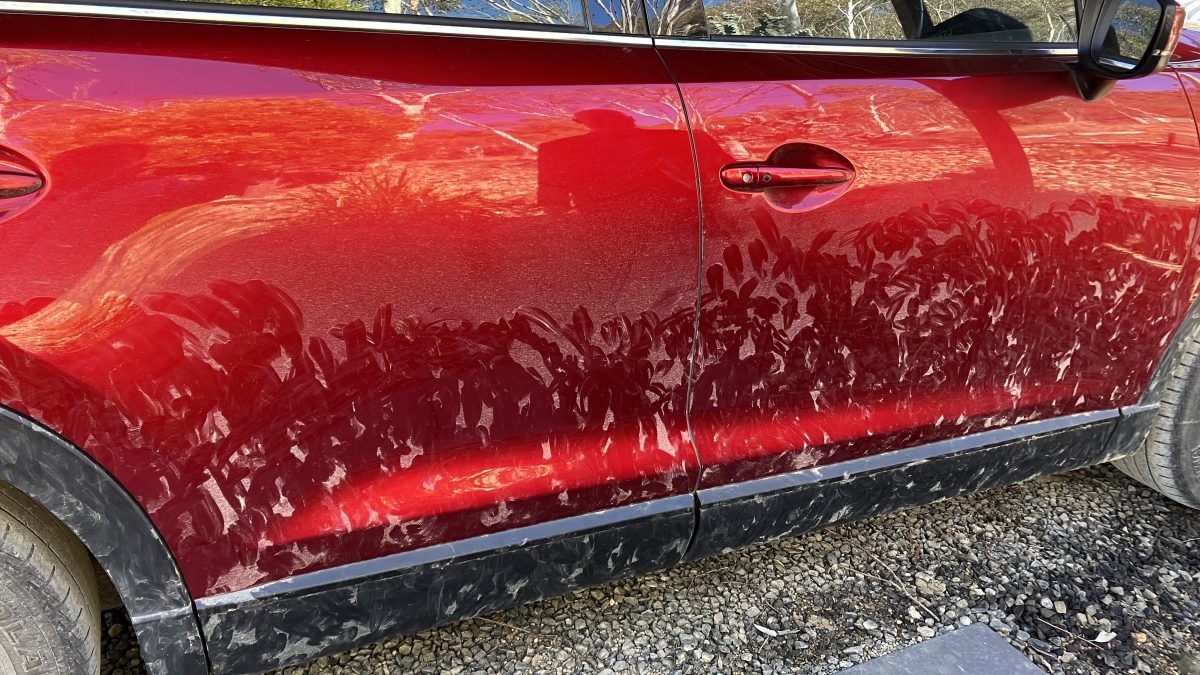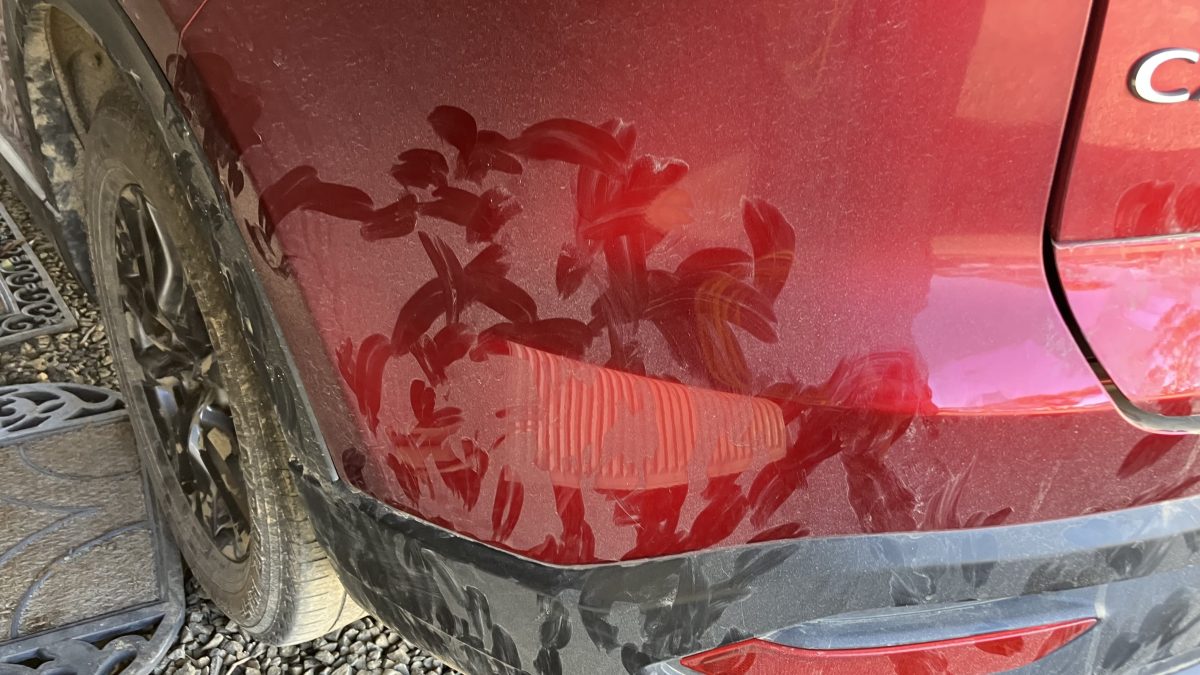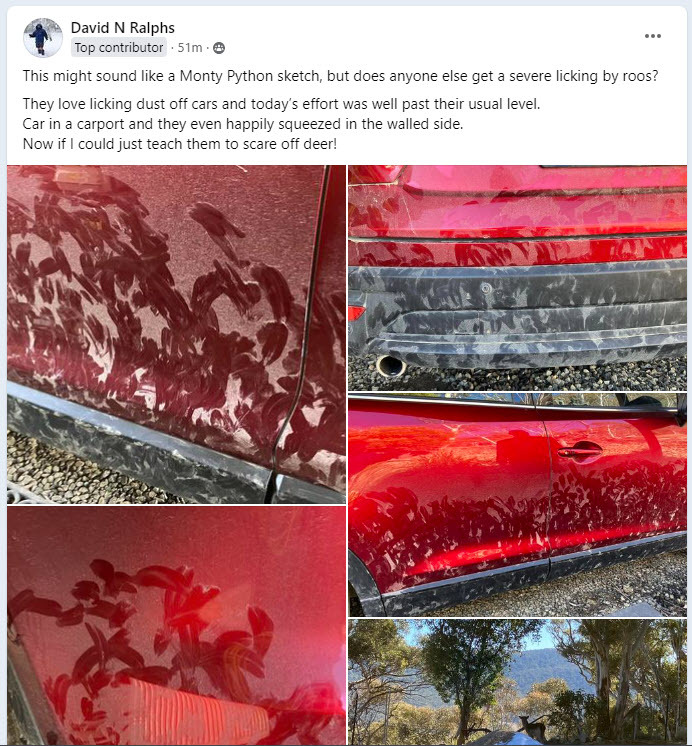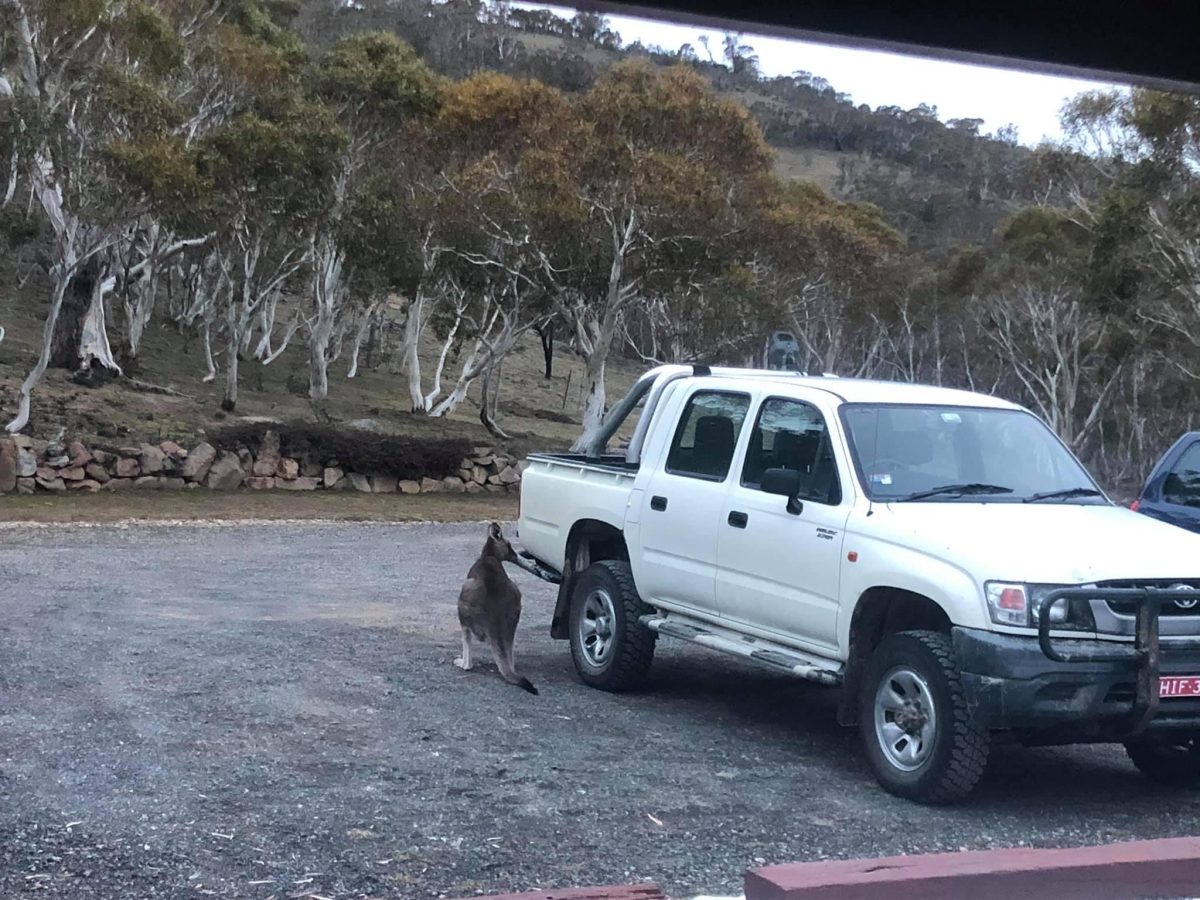
That’s had a good licking. Photo: David Ralphs.
David Ralphs has lived on and off in his house near Lake Crackenback, off Alpine Way, for more than 20 years. In that time, he’s seen generations of local kangaroos come and go, from the original roo called ‘Nikki’ to her granddaughter, today’s ‘Nikki 3’.
“I recognise each of them by sight, and we feed them every night with roo food,” he says.
“There’s about eight of them.”
But all of them have a peculiar habit he can’t make sense of. They love to lick the family’s cars. Like, really lick.
David has shared a photo to the Jindabyne Notice Board group on Facebook showing an attempt “well past their usual level”. The red Mazda CX-9 appeared to have almost been licked clean.
“I normally wouldn’t even bother posting it because it’s such a common thing here,” he says.
“It’s always happened. It’s just that one was a particularly good effort.”
His bedroom looks out onto the carport, and often during the night, the motion sensor security lights will come on to reveal kangaroos at work on the family’s cars. All except David’s Porsche – that one is kept locked up in the garage for this reason.
“I’ve seen them. I’ve got a great shot of one of them with its head inside the wheel arch of our HiLux, looking like a mechanic checking out the suspension.”
Many of the comments suggested salt on the roads might be to blame. But David isn’t buying that reason.
“I’m not a fan of this ‘it’s the salt’ from when they salt the roads in the winter. We live up a couple of kilometres of dirt road, so the car gets dirt on it. And the roos still do this in the middle of summer.”

Tasty. Photo: David Ralphs.
So what’s going on?
Rangers from the ACT Government’s Environment, Planning and Sustainable Development Directorate (EPSDD) told us they often observe kangaroos “visiting and utilising areas with increased minerals” in sites known as “natural licks or salt licks”.
“The consumption of substances such as soil, clay and sediments is widely recorded in many mammal species around the world and is called ‘geophagy’,” the spokesperson said.
“The kangaroos may be seeking salt or other minerals from the dirt.”

Kangaroos licking cars. Photo: Screenshot, Jindabyne Notice Board, Facebook.
Geophagy might be common among mammals, but up until a 2013 study, it had never been reported among marsupials.
That year, researchers observed Eastern Grey roos in the Sundown National Park in Queensland licking the ground at several sites. They theorised they were doing it to increase their natural levels of sodium, magnesium and sulphur.
“Females with high lactation demand and large males spent the most time at the lick,” the report reads.
“In areas of Australia with low levels of sodium, high temperatures, and suitable lick sites, geophagy may play a key role in marsupial ecology.”
Some years later, Land for Wildlife, a rescue organisation based in south-east Queensland, flicked through hundreds of photos from their fauna cameras to find the same “curious behaviour”.
In an article entitled ‘Pass the Salt Please: Kangaroos eating earth for mineral salts’, the organisation related how roos would enter tree hollows – where there was no grass – and eat from the ground.
They were told by experts from the University of Queensland “that the kangaroos were obtaining salt or some other desired mineral by eating the soil”.
Commenters piled on with their own observations, including one along the Thredbo River, where deer and roos have apparently been observed “diligently licking a single black rock”.
“I prospect in the Mudgee region of NSW. I used to come across these small holes in mineralised clay … after rain. It took me a few months to work out – but roos and wallabies were digging out and eating that clay,” another comment read.

Kangaroos licking cars. Photo: David Ralphs.
There was even a case from 2023 involving cars.
“We’re camping near Lake Eucumbene, and each night, kangaroos have been licking the sidesteps and doors of our car,” it read.
“One was even licking the fender liner and tyre! The only thing we can figure is that they’re licking salt that the car has picked up from road salting near the ski fields. But we could be wrong… Has anyone else seen this behaviour?”
So why cars?
We asked Ian Fraser, Region‘s resident naturalist and he couldn’t think of “any plausible explanation”, saying “it would be a lot simpler to go the source” – ie, the roads. Likewise, Snowy Mountains Wildlife Rescue had few theories.
Maybe David Ralph’s cars have just built up a reputation among local roos for their extra saltiness?












